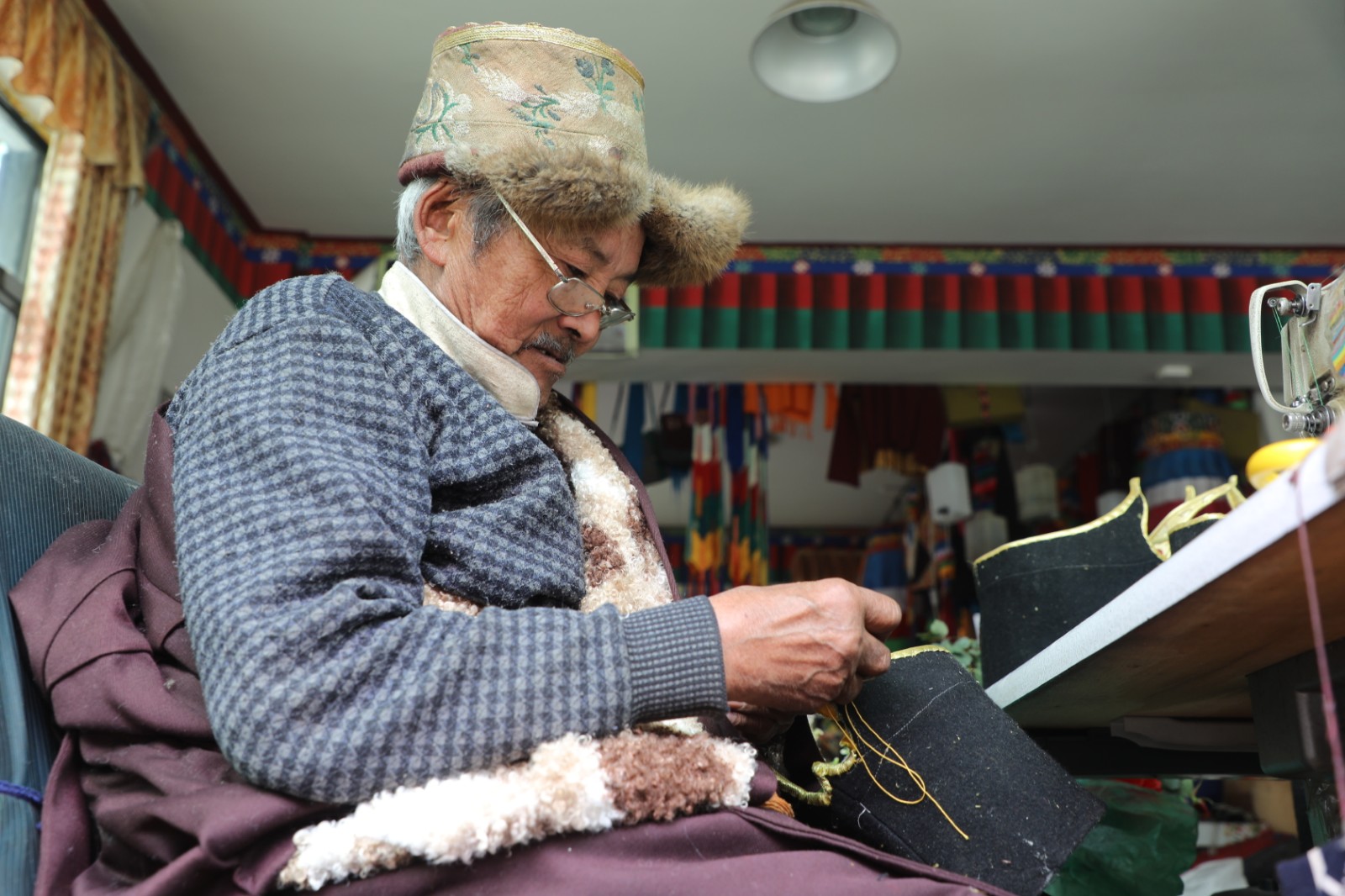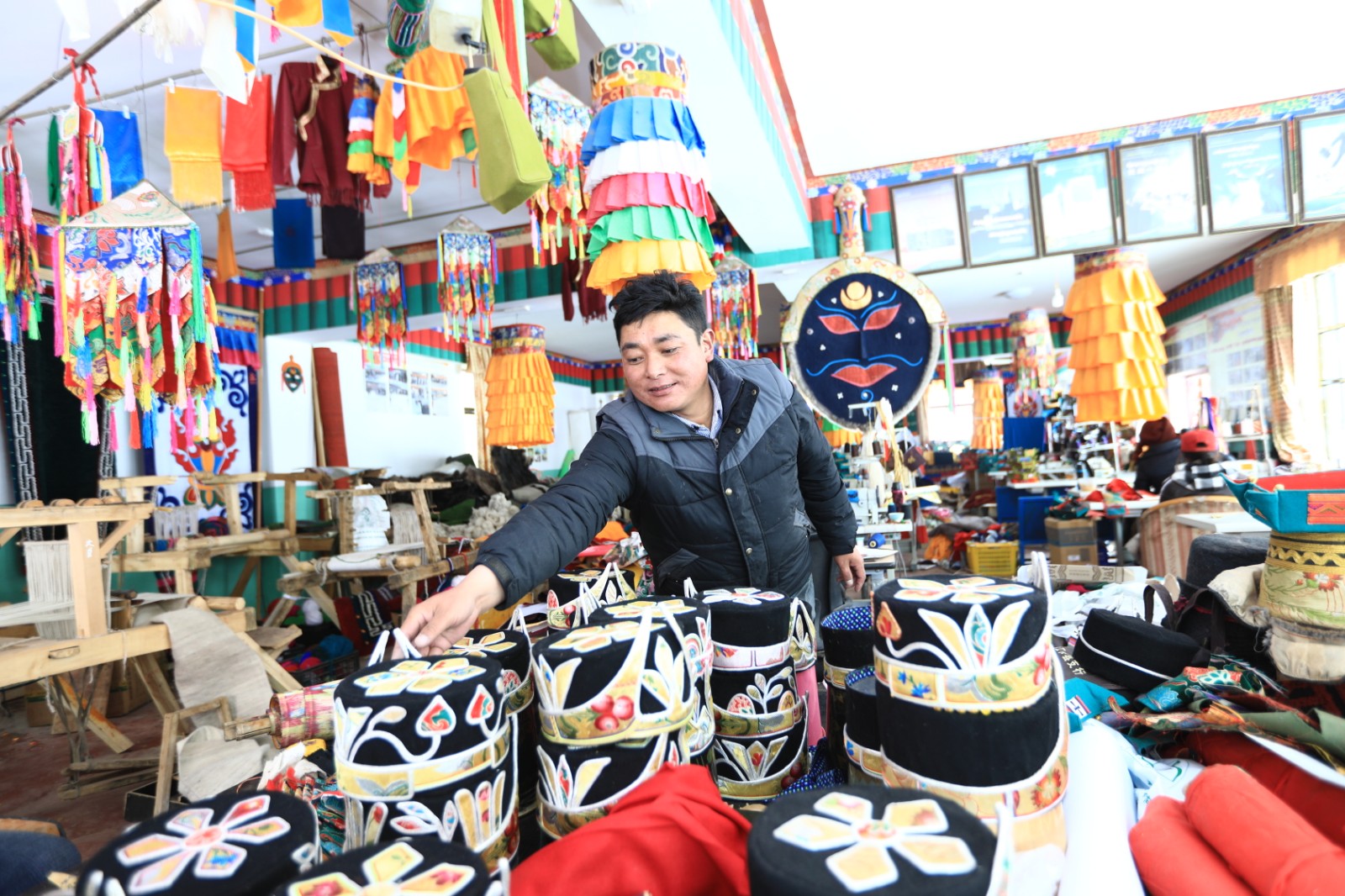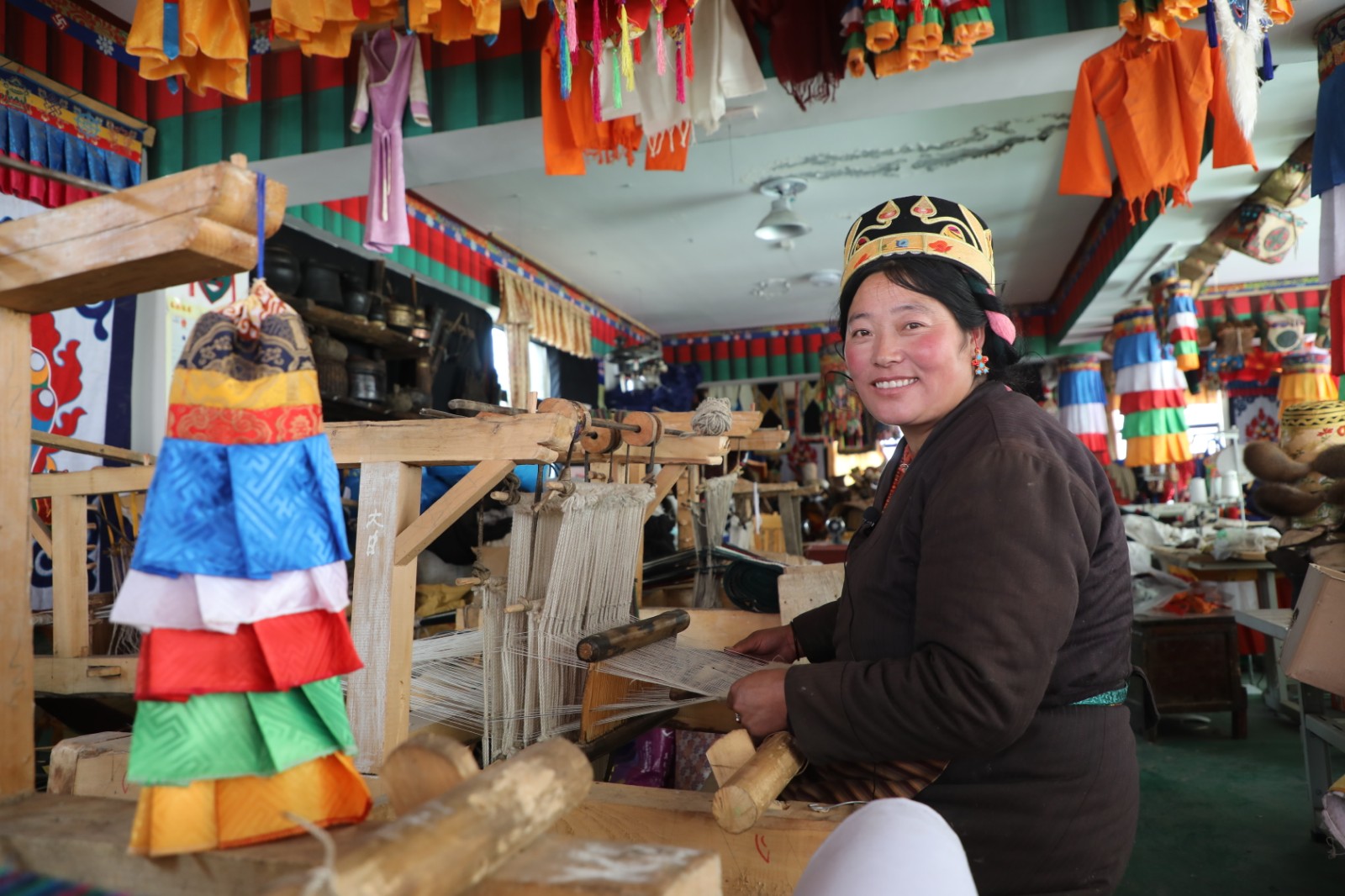Pulu hat weaving craftsmanship handed down
In recent years, the Yangrigang Village of Nyimajiangre Township, Maizhokunggar County, Lhasa City, has found a new way to make people’s lives better through developing its unique ethnic cultural resources. The Langxia Traditional Knitting Processing Professional Cooperative is one of their efforts.
The picture shows the pulu hat, which is a county-level intangible cultural heritage in Maizhokunggar.
The 74-year-old Konjo Qunpei is the fourth-generation inheritor of the local Pulu weaving technique. He has been learning the art since he was a teenager. In his childhood memory, he spent every day in the needle and thread pile with his father.

The picture shows Konjo Qunpei making a Pulu hat by hand.
Gaza married Konjo Qunpei from afar. In their life, Gaza not only loves him, but also loves his craftsmanship. She gradually began to learn Pulu craftsmanship and became Konjo Qunpei’s capable assistant. Today, the couple have passed on the craft to their sons Solang Dhondrup, Konjo Rin chen and daughter-in-law Sang Dan.
In recent years, with the support and help of the local government and the women's federations at all levels, Solang Dhondrup's family saw business opportunities and founded the Maizhokunggar County Langxia Traditional Knitting Processing Professional Cooperative and officially registered. “Langxia” means Pulu hat in Tibetan, and the most famous product in Langxia Traditional Knitting and Processing Professional Cooperative is the hat made of Pulu.

The picture shows Konjo Rin Chen, the son of Konjo Qunpei.

The picture shows Solang Dhondrup (right) checking the quality of the Pulu hat.

The picture shows Sang Dan weaving Pulu for making Pulu hat.

The picture shows a customer buying hats at the cooperative.
